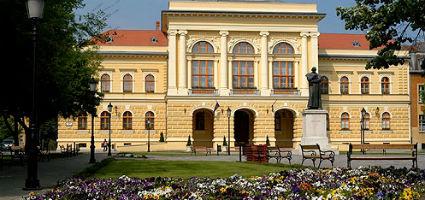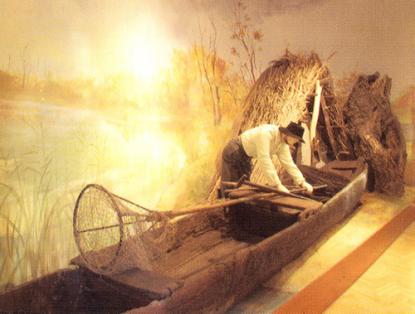2024. December 26. Thursday
József Koszta Museum - Szentes
 |
Address: 6600, Szentes Kossuth tér 1.
Phone number: (70) 228-8565, (63) 313-352
E-mail: latogato@kosztamuzeum.hu
Opening hours: Tue-Fri 9-15, Sat 10-16
|
Museum tickets, service costs:
|
Individual combined ticket for adults
(József Koszta Museum + János Fridrich Photographer + Péter Pál Civic House Museum)
|
1800 HUF
|
|
|
Individual combined ticket for adults
(József Koszta Museum + János Fridrich Photographer + Péter Pál Civic House Museum, residents of Szentes)
|
1200 HUF
|
|
|
Group combined ticket for adults
(József Koszta Museum + János Fridrich Photographer + Péter Pál Civic House Museum, from over 10 people)
|
1300 HUF
|
/ capita
|
|
Group combined ticket for adults
(József Koszta Museum + János Fridrich Photographer + Péter Pál Civic House Museum, 2 adults + 2 students, from over 10 people)
|
600 HUF
|
/ capita
|
|
Individual combined ticket for students
(József Koszta Museum + János Fridrich Photographer + Péter Pál Civic House Museum)
|
1500 HUF
|
|
|
Individual combined ticket for students
(József Koszta Museum + János Fridrich Photographer + Péter Pál Civic House Museum, residents of Szentes)
|
700 HUF
|
|
|
Individual combined ticket for pensioners
(József Koszta Museum + János Fridrich Photographer + Péter Pál Civic House Museum)
|
1500 HUF
|
|
|
Individual combined ticket for pensioners
(József Koszta Museum + János Fridrich Photographer + Péter Pál Civic House Museum, residents of Szentes)
|
700 HUF
|
|
|
Combined ticket for families
(József Koszta Museum + János Fridrich Photographer + Péter Pál Civic House Museum, 2 adults + 2 students)
|
5800 HUF
|
/ family
|
|
Combined ticket for families
(József Koszta Museum + János Fridrich Photographer + Péter Pál Civic House Museum, residents of Szentes, 2 adults + 2 students)
|
3100 HUF
|
/ family
|
|
Guide
|
4200 HUF
|
|
|
Photography
|
600 HUF
|
|
|
Video
|
600 HUF
|
The exhibition titled ‘Pastures, Plough Lands, Wide Waters. Husbandry in the Suburbs of Szentes' begins with an introduction of forms of husbandry in the floodplains and water transportation. It tries to review the changes in time and space concerning peasant husbandry. 150-200 years ago people in Szentes lived under very different natural circumstances.

People living there applied to nature and managed to build up many-sided husbandry. Reed, wattle were planted in the floodplains and fishing was applied beside hunting of water birds.
They did not try to build banks to stop the water, It was better when the water reached the floodplains. Regulation of the river beginning in the middle of the 19th century changed the looks of the Tisza region. Earlier, the flooded regions were utilized, but the devastating floods were not accounted for.
The proportion of plough lands grew by 45% by 1875 parallel with the lessening of the pastures and meadows. Growing of vegetables only began at the beginning of the 20th century when gardeners of Bulgarian origin settled. They brought along new methods of growing and new vegetables too. This was the reason why the town became one of the most important center of gardening providing opportunity to work for many.
Grape growing had a special importance. It was grown on higher areas.

People living there applied to nature and managed to build up many-sided husbandry. Reed, wattle were planted in the floodplains and fishing was applied beside hunting of water birds.
They did not try to build banks to stop the water, It was better when the water reached the floodplains. Regulation of the river beginning in the middle of the 19th century changed the looks of the Tisza region. Earlier, the flooded regions were utilized, but the devastating floods were not accounted for.
The proportion of plough lands grew by 45% by 1875 parallel with the lessening of the pastures and meadows. Growing of vegetables only began at the beginning of the 20th century when gardeners of Bulgarian origin settled. They brought along new methods of growing and new vegetables too. This was the reason why the town became one of the most important center of gardening providing opportunity to work for many.
Grape growing had a special importance. It was grown on higher areas.
